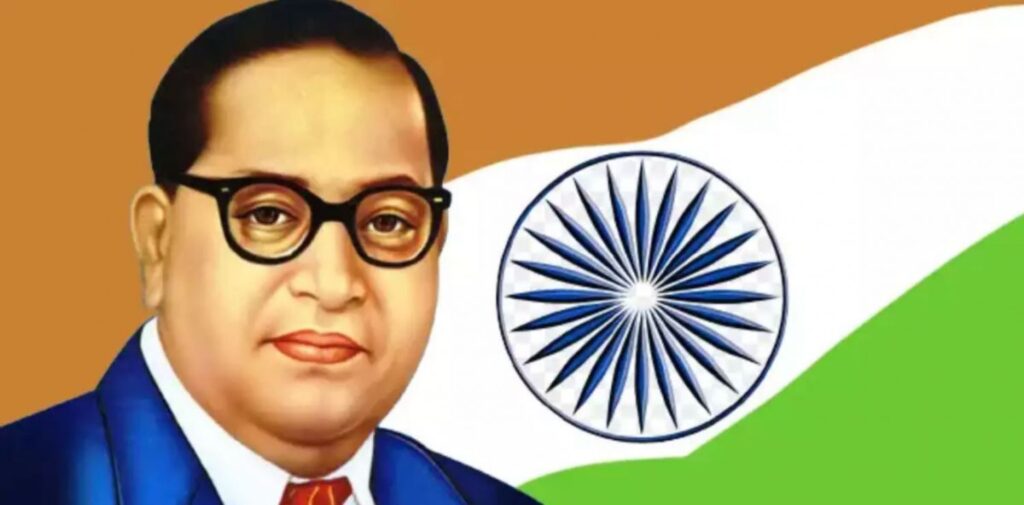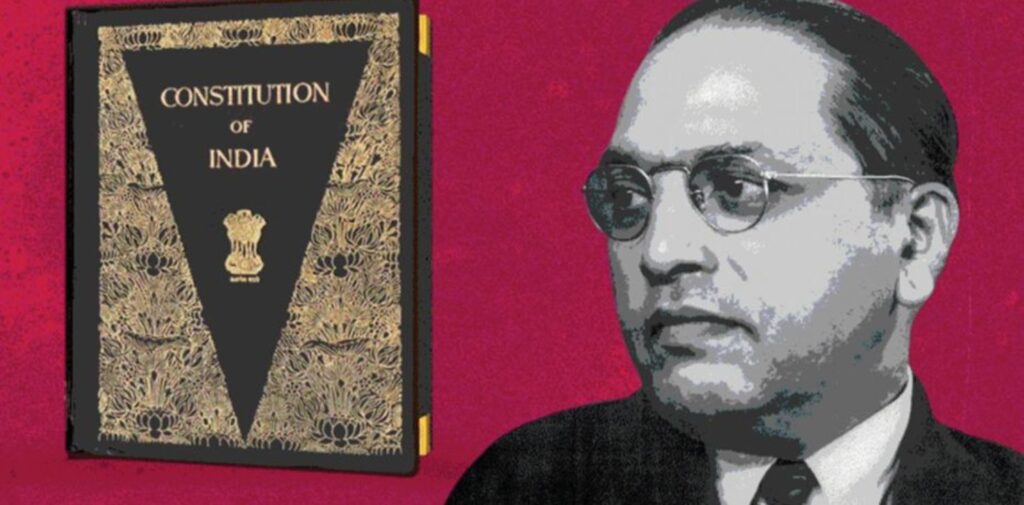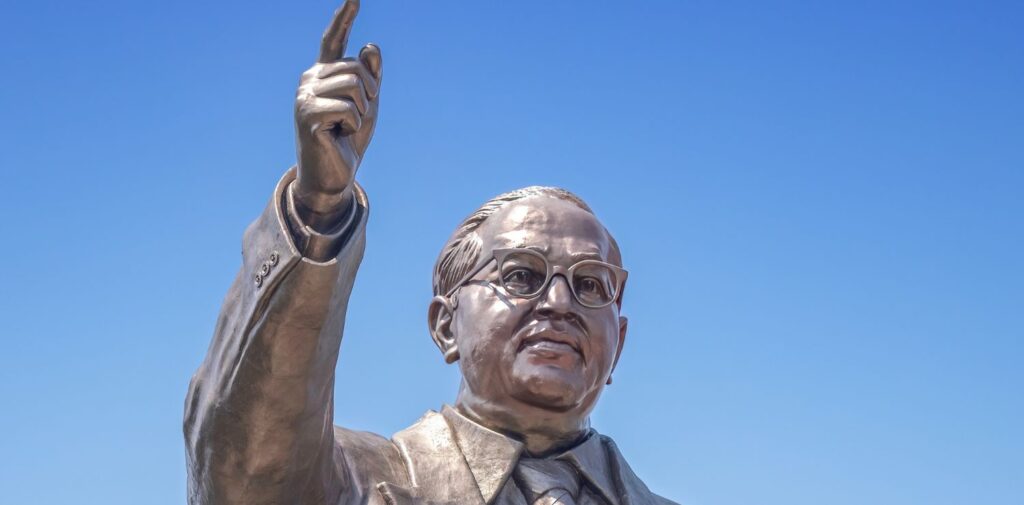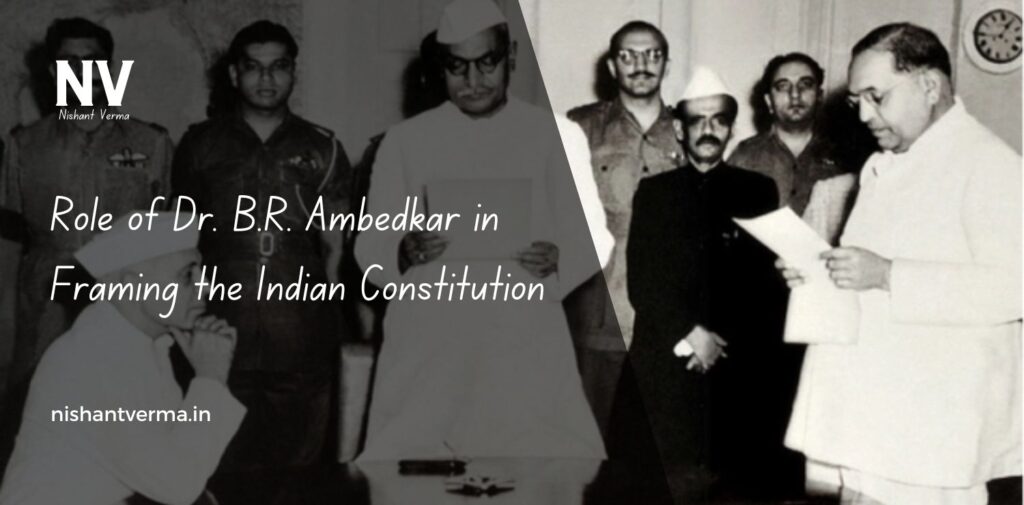Dr. B.R. Ambedkar, also known as Babasaheb Ambedkar, was one of the most important leaders in Indian history. He is remembered as the chief architect of the Indian Constitution, the document that lays out the laws and rules for how India is governed. Without his hard work, vision, and deep understanding of law, India’s Constitution might not have been the same. In this article, we will explore Role of Dr. B.R. Ambedkar in the creation of the Constitution, and why he is still remembered as one of India’s greatest leaders.
Who Was Dr. B.R. Ambedkar?
Dr. Bhimrao Ramji Ambedkar was born on April 14, 1891, in a small village in Maharashtra. He came from a poor and backward community, the Dalits (formerly called “Untouchables”). Despite facing many hardships, Dr. Ambedkar was a brilliant student. He completed his education in India and abroad, earning degrees in law, economics, and political science. He later became a social reformer, fighting for the rights of the oppressed and marginalized people in Indian society.

Dr Ambedkar is famous for his struggle against the caste system, which divided people into groups based on birth, and for his efforts to uplift the Dalits. He believed in the idea of equality and justice for all, no matter their background. His teachings and actions led to the creation of laws that gave rights and freedom to all Indian citizens, especially those who had been treated unfairly for centuries.
The Need for a Constitution
After India gained independence in 1947, the country needed a set of rules to run the government and protect the rights of its people. The Constitution would be the highest law of the land, ensuring fairness and equality for all citizens, and guiding the leaders on how to govern the country.
India, being a vast country with a large population and many different cultures, religions, and languages, needed a special kind of Constitution. It had to be strong enough to unite the people but also protect their rights. It had to ensure that no one was treated unfairly, especially the poorest and most oppressed groups in society.
Ambedkar’s Appointment as Chairman of the Drafting Committee
To create the Indian Constitution, a Constituent Assembly was formed in 1946. This Assembly was made up of leaders and experts from different parts of India who would help in designing the Constitution. Dr. Ambedkar, due to his vast knowledge of law and social justice, was appointed the Chairman of the Drafting Committee. The Drafting Committee’s job was to take ideas and principles and turn them into the actual text of the Constitution.

Ambedkar’s Vision for India’s Constitution
Dr Ambedkar wanted the Constitution of India to guarantee equality and protect the rights of every citizen, especially the Dalits, women, and other disadvantaged groups. His vision was shaped by his own experiences of discrimination and injustice. He understood that a good Constitution would not only deal with politics and governance but also with social issues that affected the lives of millions of people.
Here are some of the key ideas Dr Ambedkar believed in and worked towards while framing the Constitution:
- Equality for All: Dr. Ambedkar was a strong believer in equality. He wanted a Constitution that would ensure no one would be treated unfairly because of their caste, religion, or gender. His work in the Constituent Assembly made sure that the Constitution would include special provisions to protect the rights of Dalits, women, and other minority groups. One of the key articles he fought for was Article 15, which prohibited discrimination based on religion, race, caste, sex, or place of birth.
- Abolition of Untouchability: One of the biggest goals of Dr Ambedkar was to fight against untouchability, the practice where people from lower castes were treated as inferior and denied basic rights. His efforts led to the inclusion of Article 17 in the Indian Constitution, which made untouchability illegal. This was a huge victory for the Dalits and marked the beginning of a new era in India where everyone was seen as equal in the eyes of the law.
- Fundamental Rights for All: Dr. Ambedkar played a major role in ensuring that the Constitution included a section on Fundamental Rights. These rights are essential for every citizen and include the right to equality, freedom of speech, the right to life and liberty, and the right to practice one’s religion. Dr Ambedkar believed that these rights were essential for the people of India to live with dignity and freedom.
- Social Justice: Dr Ambedkar wanted the government to work towards social justice. This meant creating policies that would help uplift those who had been treated unfairly for generations. He was a strong advocate of reservations (affirmative action) for Dalits, tribals, and other backward classes in government jobs and educational institutions to help them overcome the disadvantages they faced. The Constitution included provisions for reservations to ensure that these groups would get equal opportunities in society.
- Right to Education: Dr. Ambedkar was a strong supporter of education, believing that it was the key to social progress. He understood that without education, people could never break free from the cycle of poverty and discrimination. The Indian Constitution, under his guidance, recognized the importance of education and made provisions for free and compulsory education for children up to the age of 14.
Ambedkar’s Struggle for Justice
Creating the Constitution was not an easy task. Dr. Ambedkar faced many challenges, both from within the Constituent Assembly and from society at large. Many members of the Assembly did not agree with some of his ideas, especially his focus on Dalit rights and social justice. However, Dr Ambedkar’s determination, knowledge, and vision helped him win over many of his opponents.
Dr Ambedkar had to fight against many social and political forces that wanted to maintain the old system of caste-based discrimination. But he never gave up. He knew that the only way to build a just and fair India was to ensure that the Constitution reflected the values of equality, freedom, and justice for all.

Ambedkar’s Legacy
The Indian Constitution, which was adopted on January 26, 1950, is a reflection of Dr. Ambedkar’s vision for a fair and just society. His work continues to have a lasting impact on Indian society today. Dr. Ambedkar’s fight for social justice and equality helped millions of Dalits and other marginalized groups gain access to education, jobs, and political rights.
Dr Ambedkar’s role in the creation of the Constitution also ensured that the rights of all citizens, no matter their background, were protected. The principles he fought for continue to guide India as it moves towards a more inclusive and progressive future.
Conclusion: Role of Dr. B.R. Ambedkar
Dr. B.R. Ambedkar’s role in framing the Indian Constitution is one of the most important contributions in the history of India. As the Chairman of the Drafting Committee, he worked tirelessly to ensure that the Constitution would protect the rights of all citizens, especially those who had been oppressed for centuries. His vision for a just, equal, and democratic society has shaped India into the country it is today. Dr Ambedkar’s legacy lives on, and his work continues to inspire people around the world to fight for justice, equality, and human rights.
Through his efforts, Dr. Ambedkar ensured that every Indian, regardless of caste, religion, or gender, could live with dignity and freedom. His role in framing the Indian Constitution will always be remembered as a pivotal moment in India’s journey toward independence, equality, and democracy.




